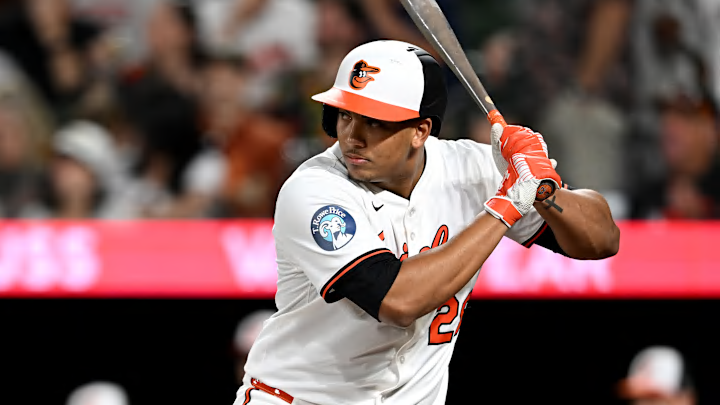Samuel Basallo is another special talent fans of the Baltimore Orioles have been dreaming about. A towering 6-foot-4 catcher with tremendous power, strong defensive chops, and one of the highest offensive ceilings of any young player in baseball. Basallo has all the tools to become a franchise cornerstone. After years of hype, he has arrived, and is ready to make Camden Yards his playground.
Baltimore’s front office made waves late in the 2025 season when they signed the 21-year-old to an 8-year, $67 million extension — before he’d even finished his first week in the majors. That kind of bold commitment speaks volumes. The Orioles aren’t just betting on potential, they believe Samuel Basallo will play a central role in the franchise’s future.
However, even the most hyped prospects don’t arrive without growing pains.
Samuel Basallo’s chase rate is a problem the Orioles need to fix fast
Through his first 60 major league plate appearances, Basallo has flashed exactly what made him the No. 8 overall prospect in baseball. Raw strength, a clean swing path, and the kind of poise behind the plate that few his age possess. He’s already launched two home runs and is learning on the fly.
Still, the early trends suggest something worth watching closely, and if uncorrected, it could become a major roadblock in his development.
Basallo currently owns a 33.9% chase rate, well above the MLB average and one of the more concerning marks among recent call-ups. Simply put: he’s swinging at too many pitches outside the strike zone.
That aggressive approach has been particularly exposed against non-fastballs. While Basallo has held his own when hunting heaters (.276 AVG vs fastballs), the numbers fall off a cliff against breaking balls, where he’s hitting just .154 with a 29.3% whiff rate.
It’s a common pitfall for young talent, getting caught guessing, expanding the zone in pressure moments, and letting early-count mistakes snowball into bad habits. But Basallo doesn’t have the luxury of developing quietly. With Adley Rutschman’s eventual exit looming, the future of the catcher position in Baltimore is already being passed to him.
And with that comes even more pressure. Baltimore is in the midst of what feels like a second youth wave. Jackson Holliday, Coby Mayo, Dylan Beavers, and now Samuel Basallo, all part of the so-called “Baby Birds.” The future isn’t on the way anymore, it’s here. And the expectations will be shifting fast: no longer just about “promising potential,” but about becoming productive contributors on a team that expects to win.
When a franchise commits nearly $70 million guaranteed to a player with zero MLB experience, they’re not just hoping he figures it out, they’re banking on it. That’s what makes Basallo’s chase rate more than just a footnote on a scouting report. It’s a potential Achilles’ heel that could hinder his ability to stick in the heart of the order long-term.
The good thing is Basallo has time. He’s just 21. And with his makeup, athleticism, and support system, he’s more than capable of making adjustments.
But the Orioles can’t afford for this to linger deep into 2026. Elite hitters at the next level don’t just punish mistakes, they force pitchers into mistakes by laying off junk and waiting for something they can drive. For Basallo to thrive, he needs to refine his plan at the plate. That's not to suggest he should take away his aggression, but channel it.
The best young hitters, Bobby Witt Jr, the O’s own Gunnar Henderson or even the steady work put in by Julio Rodríguez — all learned how to hunt their pitches without chasing. That’s the next step for the rookie catcher.
The Orioles have made their long-term bet. Now it’s on Basallo to show that he can grow into the star they believe he can be, and that starts with a consistent approach at the plate.
